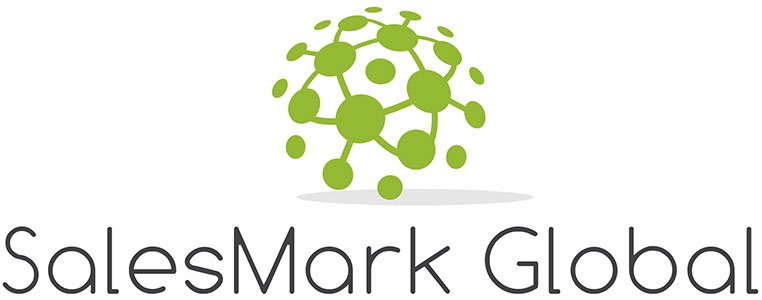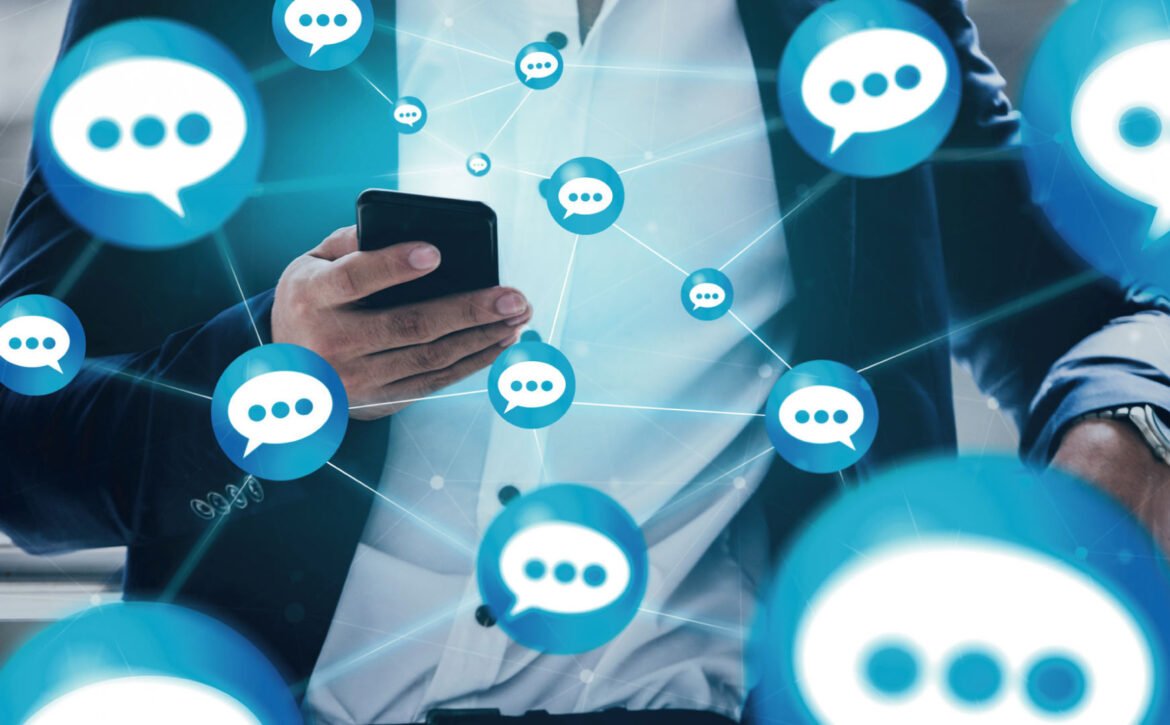Which ABM tools are perfect for SaaS in 2024? Dive into AI-driven platforms, intent data, and personalization strategies!
Table of Contents:
1. The Importance of Advanced ABM Tools for SaaS in 2024
2. Why the Focus on ABM Tools?
3. AI-Powered Account Targeting: A Game-Changer for SaaS ABM
4. Real-Time Intent Data: Capturing the Buyer’s Research Moment
5. Omnichannel Engagement: Meeting Buyers Wherever They Are
6. Scalability and Personalization: Tailoring Experiences for Every Stakeholder
7. Integrating ABM Tools with Your SaaS Tech Stack: The Power of Seamless Data
8. Integration with Martech Ecosystem
8.1 API and Automation
8.1.1 CRM Systems
8.1.2 Analytics Tools
8.1.3 Marketing Automation Platforms
8.2 Customization and Personalization at Scale
8.2.1 Real-Time Personalization
8.2.2 Scalability
8.2.3 Omni-Channel Campaigns
9. The Future of ABM for SaaS: Trends to Watch in 2024 and Beyond
9.1 AI-Driven Personalization at Scale
9.2 Privacy-First Marketing
9.3 Revenue Operations (RevOps) Alignment
As we approach the end of 2024, the SaaS companies eye a fast-changing landscape in which the buyer journey is seen as more sophisticated, the number of decision-makers increased, and real-time personalization’s demand is on the rise. In an environment like this, one of the most impactful strategies that drive growth is Account-Based Marketing. The sophistication of ABM tools is scaled up by AI, ML, and advanced intent data focusing on high-value accounts. This guide will provide an in-depth view of the best ABM tools and technologies for SaaS companies, targeting experts who look to elevate the strategy beyond basic tactics.
1. The Importance of Advanced ABM Tools for SaaS in 2024
ABM and SaaS are intimately connected with one another. Most SaaS companies, by definition, target various stakeholders within a given organization. Each stakeholder has a unique set of priorities and pain points. B2B SaaS sales cycles are complicated, and general marketing approaches can’t fulfill the requirements of such complex cycles. The approach adopted must be personalized and account-based to reach the right decision-makers at the right time.
2. Why the Focus on ABM Tools?
In 2024, emphasis on the new wave of advanced ABM tools will be much less on targeting the accounts and much more on building intricate, very individualized experiences across channels. The requirement is to maximize engagement and conversion, supported by AI-generated insights, real-time data integration, and scalability. For a SaaS business, particularly those catering to large enterprises, their ABM platforms need to scale up to accommodate large datasets, offer deep integrations with CRM systems, and make optimal use of an omnichannel framework. Let’s go through what makes an ABM tool a good fit for the SaaS ecosystem and how new features in 2024 provide great value.
3. AI-Powered Account Targeting: A Game-Changer for SaaS ABM
Account targeting by AI has been one of the primary innovations that shape ABM in 2024. The AI algorithms scan huge piles of data to select the high-value accounts. Buyer intent and conversion likelihood are assessed with regard to such accounts. Leader tools like 6sense and Demandbase make use of predictive analytics not just to identify the right accounts but also the right timing and messaging needed for maximum engagement.
Why It Matters: Complexity of SaaS deals means targeting the wrong account wastes valuable marketing resources. AI can be relied upon to help ensure marketing and sales efforts focus on the right accounts, those most likely to convert.
Case Study: Salesforce and 6sense
The company is the world leader in the SaaS industry and onboarded 6sense to utilize its predictive analytics on their enterprise accounts. With AI-powered account targeting by 6sense, Salesforce witnessed a 25% increase in sales opportunities and the time-to-close of enterprise deals. Predictive modeling of the platform helped Salesforce to make accurate predictions of who would be interested in its enterprise cloud services so that marketing resources could be nearly perfectly allocated.
4. Real-Time Intent Data: Capturing the Buyer’s Research Moment
The SaaS business is highly competitive, so it means one has to engage with potential clients whenever the time is right. Tools such as RollWorks and Terminus offer advanced capabilities in intent data. They help allow SaaS companies to understand the moment of active research by their target accounts on their products or services connected with them. They track on the web all behaviors related to content consumption, searches, and social interactions.
Why It Matters: SaaS buyers do deep online research often, even before they ever send a message to a seller. The ability to capture and respond on these real-time signals enables marketers to engage prospects at the moment of highest interest.
Case Study: HubSpot and Terminus
SaaS CRM leader HubSpot employs Terminus to power real-time engagement with key prospects. Using intent data, it was able to serve more targeted campaigns that more than doubled the rates of engagement, particularly in its enterprise solutions. The inclusion of intent signals in an account-based strategy would ensure that early-research decision-makers had been reached at the right points in their journeys.
5. Omnichannel Engagement: Meeting Buyers Wherever They Are
A SaaS buyer will have multiple touch points in the buying process. Omnichannel engagement, therefore, becomes imperative in order to render homogeneous, personalized experiences. The best ABM platforms are the ones that help you engage your accounts across all channels—email, web, social media, paid ads, even direct mail—which will create a unified, seamless experience.
Why It Matters: Today’s SaaS buyer requires consistency. Whether they are communicating via social media, webinars, or product demos, it is pretty much huge consistency across all platforms that increases the trust and engagement dramatically.
Case Study: Slack and Demandbase
Slack, the company that specializes in the delivery of SaaS for team communication, ramped up omnichannel ABM campaigns on Demandbase. It synchronized messaging across digital ads, emails, and website personalization to achieve a 40% growth in pipelines for enterprise deals. The capacity to present a consistent experience across several channels proved instrumental in closing complex buying committees.
6. Scalability and Personalization: Tailoring Experiences for Every Stakeholder
In SaaS, deals often involve multiple decision-makers with varied influence levels and differing needs. ABM platforms like 6sense and Demandbase scale up by automating personalized experiences across entire buying committees. Rather than delivering one message to an account, these platforms allow you to customize content and messaging for each stakeholder within a target company.
Why It Matters: Personalization has been demonstrated to increase leads by as much as 19% and have deals close almost 17% faster.It enhances engagement and conversion but scales those personalized efforts across hundreds or thousands of accounts very hard unless automated. These solutions make it easy so that every interaction feels personal and relevant, not matter how large your account portfolio is.
Case Study: Adobe and Demandbase
Adobe, the world’s leading SaaS company, scales its ABM efforts through Demandbase. Personalized content, produced for every decision-maker at an account, increased by 50% pipeline generated by marketing at Adobe. Scalable personalization helped reach enterprise customers whose stakeholders included IT managers and finance executives at each account.
7. Integrating ABM Tools with Your SaaS Tech Stack: The Power of Seamless Data
All your existing SaaS tech stack must work without a hitch to win campaigns in ABM. Whether it is your CRM (Salesforce, HubSpot), for example, marketing automation platform (Marketo, Pardot), or analytics tools, integration ensures free data flow between platforms. This integration ensures there are no silos for data and helps ensure the right real-time access is given to the right insights by teams to drive campaigns in ABM.
Why It Matters: Data silos are a major inhibitor/challenge to scaling ABM efforts. Teams can’t coordinate effectively cross-departmentally without a single source of truth. Tools like Demandbase are deeply integrated with leading CRMs, which enables a cohesive strategy from lead generation through the deal close.
Case Study: Zendesk and Salesforce Integration with Terminus
The best part is that Zendesk, being a SaaS company, utilized Salesforce as its CRM; with the integration of Terminus into their business, they were able to achieve real-time account intelligence and tracking across their pipeline. It helped make the sales and marketing teams work in harmony, thereby reducing the sales cycle time by 30%.
8. Integration with Martech Ecosystem
8.1 API and Automation
Integration with the larger MarTech ecosystem is perhaps the most critical aspect of a successful ABM strategy for SaaS companies. Advanced ABM needs to fit seamlessly along with other required platforms such as CRM systems, analytics platforms, and marketing automation tools. Now let’s understand how seamless integration of those elements amplifies the potential of an ABM strategy.
8.1.1 CRM Systems:
It is also foundational for integration with CRMs like Salesforce and HubSpot, where critical customer data is stored: past interactions, lead scores, and sales pipeline stages. Through integration of the ABM tools into CRMs, marketing teams can access rich datasets to segment and prioritize accounts based on intent signals, lead scores, and historical buying behavior. So, in the end, marketing and sales are both aligned as to what accounts to target and how to engage them.
For example:Through the integration of the Demandbase with its CRM Salesforce, marketing and sales teams can work in one single platform. More than that, this configuration can also share account status and engagement metrics in real time across departments, eliminating data silos as a precursor to cross-functional collaboration.
8.1.2 Analytics Tools:
Integrating ABM tools with solutions like Google Analytics or advanced business intelligence (BI) tools like Tableau or Looker is really helpful in providing more granular understanding of the engagement happening in an account. Feeding the data collected from ABM campaigns into these analytics tools helps SaaS companies monitor how particular accounts are interacting with their website, content, or ads and attribute performance directly to revenue.
This is where the 6sense AI-powered platform can integrate with Google Analytics to pick up on the digital body language of target accounts, or pages visited and time spent, connecting this data with predictive models of engagement and deal outcomes.
8.1.3 Marketing Automation Platforms:
Platforms like Marketo and Pardot are typically around which marketing automation workflows are built. Combined with ABM platforms, they help to run hyper-targeted, multi-channel campaigns at scale. ABM tools can leverage the automation platform to execute personalized email sequences, display ads and content recommendations for each account’s unique journey. Automating these actions ensures no account is ever left unengaged at any point in the sales funnel.
Terminus, for example connects to Marketo, so that email campaigns based on account are triggered when accounts reach certain engagement thresholds. It means that companies can naturally nurture those high-value accounts with the right content at the right moment using real-time behavioral insights.
8.2 Customization and Personalization at Scale
The increasing use of artificial intelligence in ABM is changing the way SaaS companies customize and scale their campaigns. AI-powered ABM platforms enable marketers to transcend simple account targeting and move toward real-time, channel-agnostic, hyper-personalized experiences.
8.2.1 Real-Time Personalization:
Tools such as 6sense and RollWorks use AI to review account-level data in real-time with the detection of patterns and intent signals. Equipped with such insights, the platform can automatically and dynamically serve highly customized ads, dynamic content, and offers based on true needs and behaviors of every account without having to manually segment accounts. It thus calls for a shift from high manual segmentation to one-dimensional and more accurate messaging without sacrificing scale.
For example, if there is a high intent signal from an account to buy a particular feature-pitched value proposition-out of the numerous possibilities, cloud security for a SaaS solution-an AI-enabled ABM platform can customize and adjust messaging on the fly with appropriate content, case studies, or even webinars that talk directly to that interest. It results in real-time personalization without humans’ interference.
8.2.2 Scalability:
AI means that it is now possible to personalize to scale, a task that would have otherwise taken a lot of time and labor to do manually under traditional ABM. The integration of the broader MarTech stack and ABM tools allows SaaS companies to achieve high levels of personalization even with larger target account universes. AI continuously analyzes behavioral data so that personal messaging is constantly evolving with the prospect’s journey through the funnel.
For example, Demandbase helps marketers scale personalization across thousands of accounts by using a blend of real-time intent data and historical CRM insights to ensure every interaction feels relevant, even in the largest ABM program.
8.2.3 Omni-Channel Campaigns:
To effectively leverage ABM toolsets, SaaS marketers need to engage target accounts across channels like emails, ads, social media, and mail. Platforms in AI-driven ABM automatically make on-the-fly adjustments to content across these channels so that whatever the account does to interact with a brand, there is consistency and personalization.
For example, Terminus offers an omni-channel approach whereby dynamic, personalized ads can be served on LinkedIn, Google Display, and Facebook as coordinated through personalized email sequences as well as through direct mail campaigns through automation platforms such as Marketo.
9. The Future of ABM for SaaS: Trends to Watch in 2024 and Beyond
The future of ABM in SaaS will depend on a few key themes: when the advanced technologies become more accessible and buyer expectations evolve. Here are the trends shaping ABM in 2024 and beyond:
9.1 AI-Driven Personalization at Scale
The future will be one in which the widespread adoption of AI permits delivery of hyper-personalized content across large accounts. As AI continues to improve, a 6sense and similar platforms will hone predictive algorithms to predict which accounts are worthy of pursuit but also what specific content will resonate with who at the individual stakeholder level.
9.2 Privacy-First Marketing
With further evolving regulations on data privacy, such as GDPR and CCPA, SaaS firms must ensure their ABM platforms align with stringent data protection standards. Further, solutions like Demandbase have features for privacy compliance built into the product. Organizations can manage consent by providing such experiences.
9.3 Revenue Operations (RevOps) Alignment
The alignment of sales, marketing, and customer success will continue to grow, with ABM platforms providing the infrastructure to work around that. With Engagio, integration into RevOps will ensure a full view of the customer journey-from prospecting right after the sale to post-sale engagement.
How to Choose the Best ABM Tool for Your SaaS Company
Choosing the right ABM tool in 2024 requires a look at platforms that can support your business today but also position you for future growth. For large SaaS companies, Demandbase and 6sense offer the most robust AI-driven account targeting, personalization, and cross-channel integration. For mid-market SaaS companies, RollWorks and Terminus are offering scalable, cost-effective solutions that can help drive growth without sacrificing features.
To maximize your ABM strategy’s effectiveness, focus on tools that offer:
- Real Time Intent Data – to pull prospects into the buying cycle
- AI-powered predictive analytics – to prioritize high-value accounts.
- Seamless integration with your tech stack, ensuring data flow.
- Scalable personalization – to engage multiple stakeholders in targeted accounts.
By integrating these elements, the SaaS company will not only survive in the competitive game but also be able to give a consistent engaging experience to your most important accounts, which contributes to long-term growth in the market.
Visit Our SalesMarkBlog Section to Uncover the Sales Strategies That Ignite Your Sales Journey!











